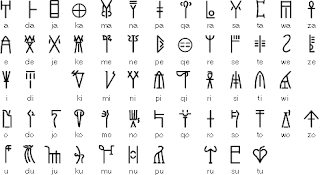Linear A, a writing system that was used by the Minoans
from 1800-1450 BC has never been fully decrypted.
Used in religious and government writings of the Minoan
Civilization the script has intrigued and frustrated experts for umpteen
centuries.
Now, for the first time, scientists and archaeologists
believe that they have broken the symbols indicating numerical fractions in the
Linear A writing system.
Linear A was discovered and named by the British
archaeologist Sir Arthur Evans, who lived from 1851-1941.
It was succeeded by Linear B, which was used by Mycenaeans to
write an early form of Greek but no complete texts have ever been decoded.
The term “Linear” derives from a script that was written by
using a sharp pen to cut lines on a clay tablet, as opposed to “cuneiform” was
written by using a stylus to press wedge-shaped letters into the clay.
Linear A belongs to a group of scripts that are similar to
hieroglyphics, but they evolved independently from the Egyptian and
Mesopotamian writing systems.
During the second millennium BC, there were four major
branches of this alphabet, “Linear A”, “Linear B”, “Cypro-Minoan” and “Cretan”
hieroglyphics.
In the 1950s, archaeologists decoded Linear B as Mycenaean
Greek. They found that “Linear B” shared
many symbols with “Linear A” and they may illustrate similar syllabic values.
But neither those nor any other proposed readings led to a
language that could be read by experts.
The only part of the script that can be deciphered and read
are the signs of numbers, which are, however, only known as numerical values.
The actual names for these numbers remain unknown.





No comments:
Post a Comment